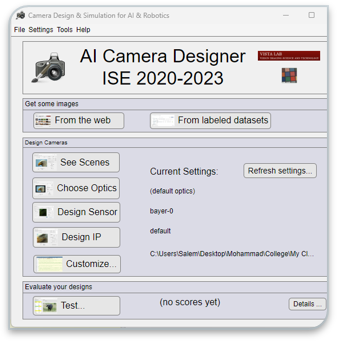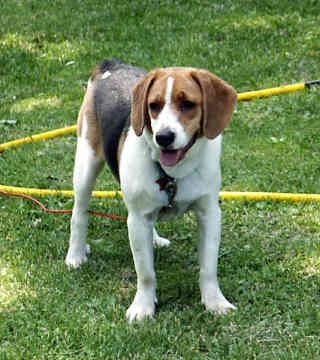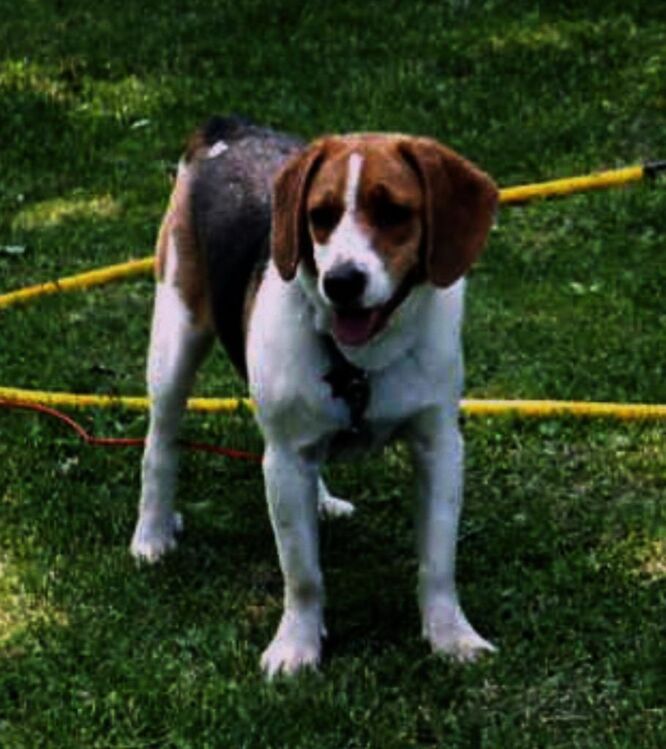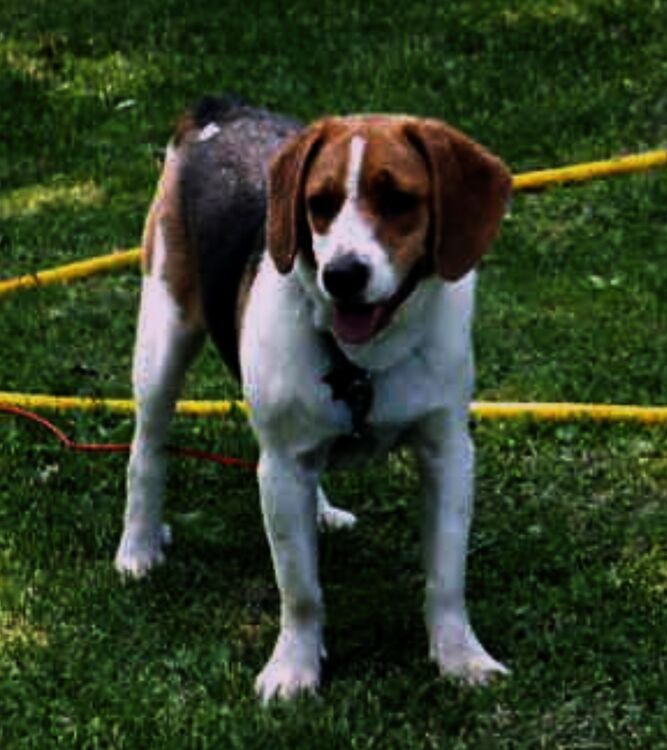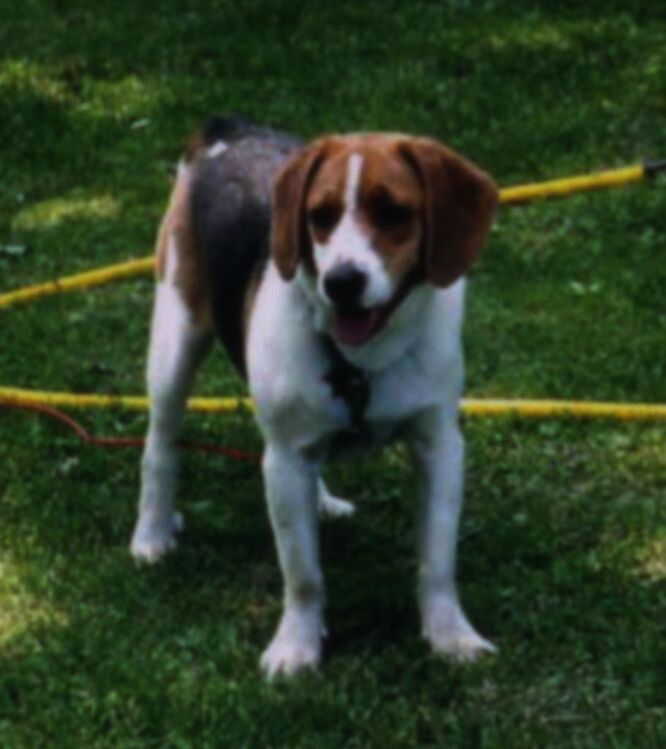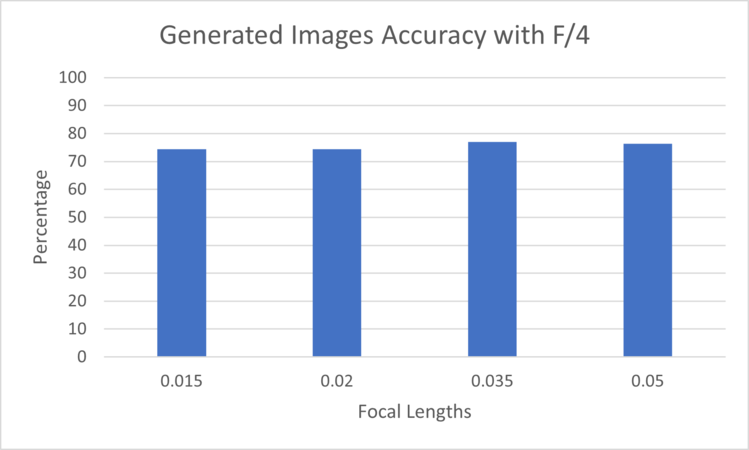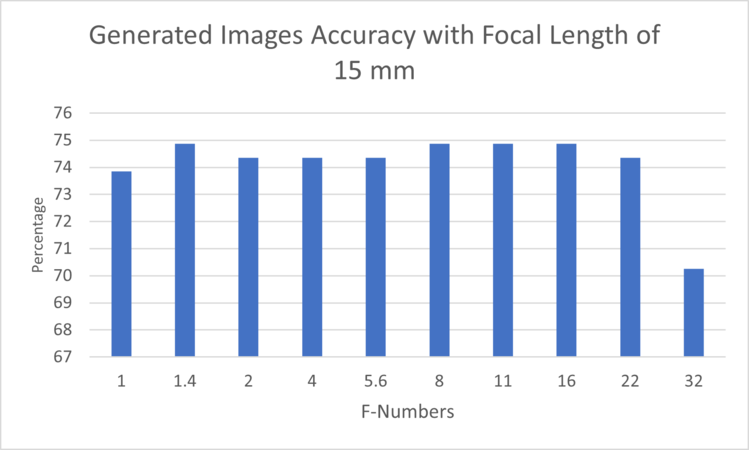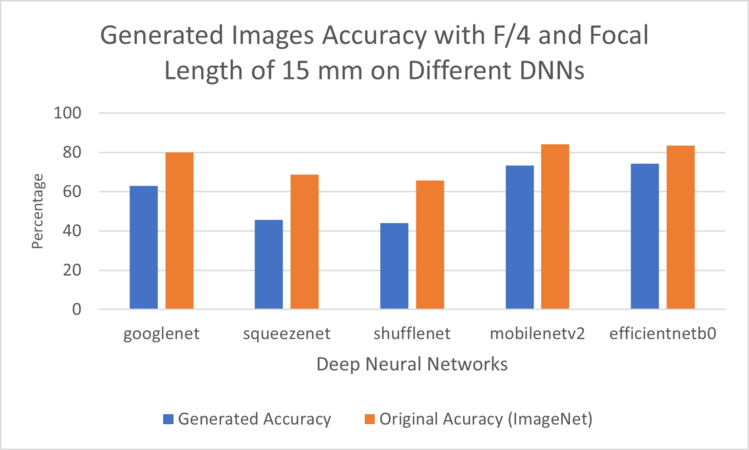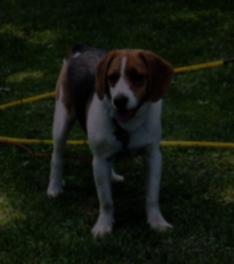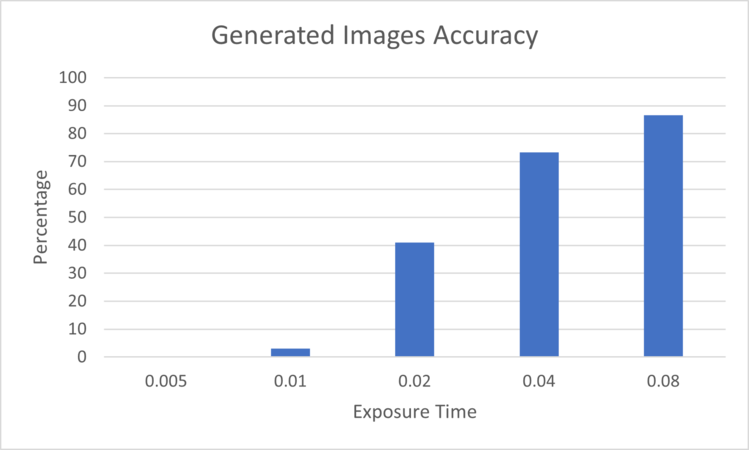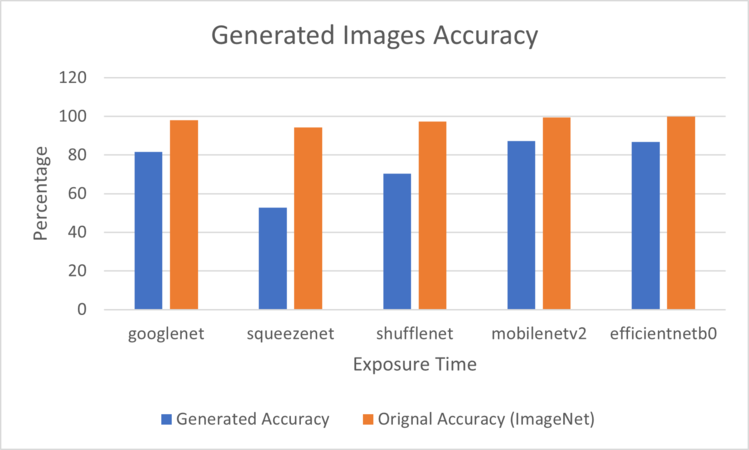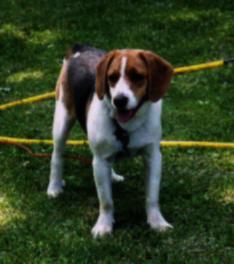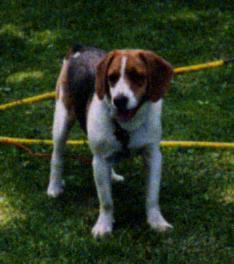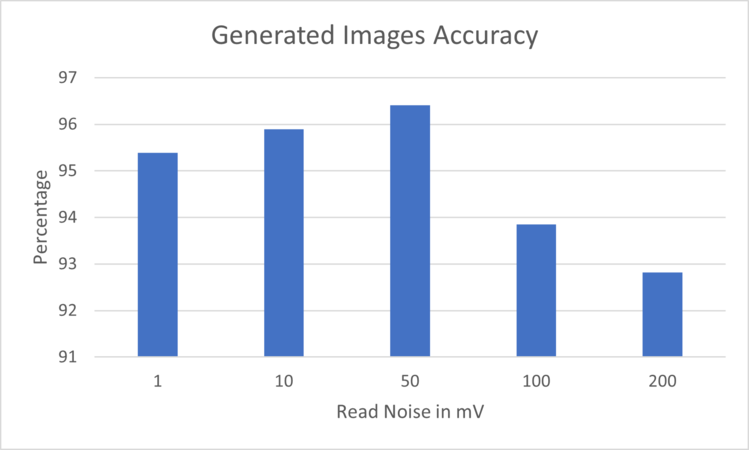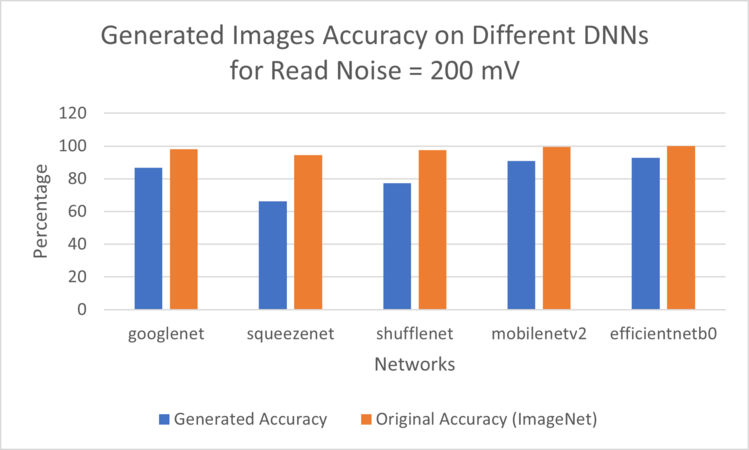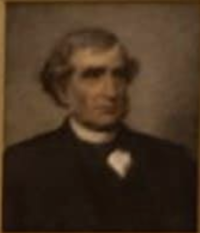Impact of Camera Characteristics on DNN Model Inference Performance
Introduction
There are many image recognition applications that classify images using pre-trained Neural networks. However, testing images used in these application could be captured by different users, cameras, environments, etc. How could the image quality affects the application decisions or classification? Using ISETCameraDesigner, we will generate images with different camera characteristics. These set of images will be evaluated on different DNN model inferences and conclusions will be drawn about the different DNN models performance, scores, and effect of the images quality on the predictions.
Background
F/#
The ratio of the aperture diameter to focal length.
N: F/# (F-Number)
f: Focal Length (m)
D: Aperture Diameter (m)
Focal Length
The measurement of how strongly the system converges or diverges light.
Exposure Time
The duration of the camera/sensor collects light.
ISET AI Camera Designer
- Build Camera subsystems; Optics, Sensor, and IP.
- Use a collection of images.
- Generate Images from the original Images with the Camera Design.
- Evaluates Original Images vs Generated Images on different pre-trained DNNs.
- Scores are based on the classification match (top-1) of the original and generated images.
ImageNet
ImageNet Dataset:
- 1000 classes/categories
- 1,281,167 training images
- 50,000 validation images
- 100,000 test images
DNN Architecture
- Pre-trained on ImageNet dataset and available in Matlab
- Chosen for smaller footprint targeting embedded applications
- All Convolutional Neural Networks (CNNs)
- Output a predicted class using probability distribution from softmax
| DNN Architecture | Depth | Size | Parameters (Millions) | Image Input Size |
|---|---|---|---|---|
| GoogleNet | 22 | 27 MB | 7.0 | 224-by-224 |
| SqueezeNet | 18 | 5.2 MB | 1.24 | 227-by-227 |
| ShuffleNet | 50 | 5.4 MB | 1.4 | 224-by-224 |
| MobileNetV2 | 53 | 13 MB | 3.5 | 224-by-224 |
| EfficientNetB0 | 85 | 20 MB | 5.3 | 224-by-224 |
Methods
In this project, there were many techniques that were used to measure and analyze the data. It was fully ran thru MATLAB and ISETCam. MATLAB and ISETCam played significant role in generating images with different Camera characteristics. Throughout this project, different DNN models, ImageNet datasets, and camera characteristics were used to measure the mean classification accuracy of the Beagle Category (196 Images) and analyze them.
ISET AI Camera Designer
-
Picture 1: ISET AI Camera Designer Application
- Simulates Cameras with different subsystems; Optics, Sensor, and IP.
- Uses a collection of images selected by the user.
- Applies modifications to the images through utilizing the designed subsystems.
- Evaluates Original Images and generated images on different pre-trained DNNs. However, scores are based on the classification match of the original and generated images depending on the number of score classes.
Experiments
In this project, we tweaked the camera characteristics by incorporating a combination of parameters in the camera subsystems such as Optics and Image Sensor. Our approach involved conducting multiple experiments to thoroughly investigate the effect of the different camera characteristics on the DNN models classification.
The combination of data used in each of the experiments is as follows:
F/# - Focal Length Combination
In this combination experiment, we assessed classification accuracy based on the presence of the correct label within the top predicted class. Data and Images were generated with a combination of f-numbers and focal lengths to explore if there are any interesting relations. The combination were used in the data collection are as follows which provide 40 deferent datasets:
- F/#: f/1.0, f/1.4, f/2, f/4, f/5.6, f/8, f/11, f/16, f/22, f/32
- Focal Lengths used for each of F/#: 15, 20, 35, 50 mm
- Focal Lengths used for each of F/#: 15, 20, 35, 50 mm
Exposure Time
In this experiment, we assessed classification accuracy based on the presence of the correct label within the top five predicted classes which more tolerant than the F/# and Focal Length combination experiment. Also, the data was collected by only modifying the exposure time. The exposure times were used in the data collection are as follows:
- Exposure Times: 5, 10, 20, 40, 80 milliseconds.
Read Noise
In this experiment, the classification accuracy was assessed as same as the Exposure Time based on the top five predicted classes. The images were generated with the default settings of the Camera Designer App. However, we only modified the read noise of the camera sensor. The read noise values that were used in the data collection are as follows:
- Read Noise: 1, 10, 50, 100, 200 mV
Results
-
Picture 2: Beagle Original Image from Image Net
In the data collection and generating images, we used the Beagle Category from the ImageNet dataset. In this write-up, we will use Picture 2 as the base image and display the effect of the Camera parameters on it.
F/# and Focal Length
-
Picture 3: Beagle Image with F/4 and Focal length of 15 mm
-
Picture 4: Beagle Image with F/4 and Focal length of 50 mm
-
Picture 5: Beagle Image with F/32 and Focal length of 15 mm
In F/# and Focal Length experiment, the modification of the parameters cause some blurriness and zoom effects on the base images as shown in the Pictures 3, 4 and 5. SqueezeNet and ShuffleNet performed poorly when compared to the other architectures because these 2 have the smallest parameter count limiting their expressivity; representational power.
-
Figure 1: Generated Images Accuracy for the different Focal Lengths with F/4 evaluated on EfficientNetB0
-
Figure 2: Generated Images Accuracy for the different F-Numbers with Focal Length of 15 mm evaluated on EfficientNetB0
-
Figure 3: Generated Images Accuracy for F/4 and Focal Length of 15 mm Exposure Time evaluated on deferent DNNs
In Figure 1, the chart does not show impact on the classification when the focal length is modified. Similarly, when the Focal length is fixed and the F-number is change. However, only when the F-Number is set to F/32, the image is blurry causing decrease in the classification accuracy as shown in Figure 2.
Exposure Time
-
Picture 6: Beagle Image with 10 milliseconds exposure time
-
Picture 7: Beagle Image with 80 milliseconds exposure time
In the Exposure Time experiment, the images clearly reveal the impact of exposure time. A direct relationship is observed: as exposure time increases, the images become brighter, and conversely, they become darker.
-
Figure 4: Generated Images Accuracy for the different Exposure Times evaluated on EfficientNetB0
-
Figure 5: Generated Images Accuracy for 80 milliseconds Exposure Time evaluated on deferent DNNs
In Figure 4, the chart illustrates the impact of the exposure time on the classification accuracy. The greater the exposure time, the better the classification accuracy since the images are clearer and sharper. Also, it is noticeable among the various deep neural networks (DNNs) employed to assess the images, the performance of the SqueezeNet DNN was the worst with a 52.8% accuracy, as shown in Figure 5, while the MobileNetV2 archived the best accuracy with 87.2%.
Read Noise
-
Picture 8: Beagle Image with 1 mV Read Noise
-
Picture 9: Beagle Image with 200 mV Read Noise
In the Read Noise experiment, there is a subtle dissimilarity between the images, which may not be immediately apparent. The image on the right exhibits more noise, resulting in a loss of some finer details.
-
Figure 6: Generated Images Accuracy for the different Read Noises evaluated on EfficientNetB0
-
Figure 7: Generated Images Accuracy for 200 mV Read Noise evaluated on deferent DNNs
In Figure 6, the chart depicts a decline in classification accuracy corresponding to an increase in read noise. While the decrease may not be statistically significant, it is evident that the accuracy tends to decline with an increase in read noise. Notably, SqueezeNet exhibited the worst performance with a classification accuracy of 66.2%, while MobileNetV2 and EfficientNetB0 demonstrated the highest classification accuracies in this experiment.
Conclusions
- DNN model performance is impacted by camera parameters
- Empirical iterative discovery process to determine impact direction and magnitude
- Camera parameters’ adjustments can be applied at training time either to restrict or widen the data distribution depending on application
- Restrict to target a smaller model parameter space (more constrained application)
- Widen to generalize better (less constrained application)
- At inference time they can bring an out-of-distribution example into in-distribution
Appendix
You can write math equations as follows:
You can include images as follows (you will need to upload the image first using the toolbox on the left bar, using the "Upload file" link).

